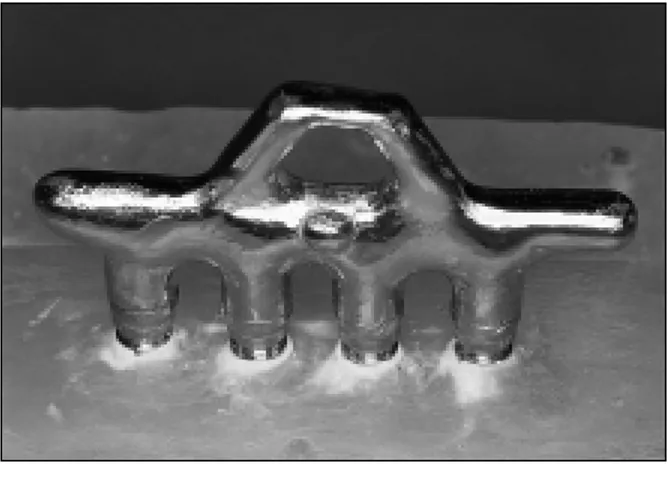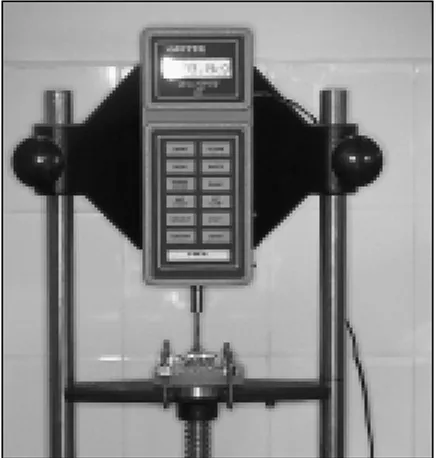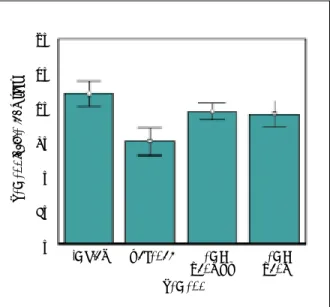Luting Agents Used for the Cementation of
Implant-Supported Fixed Partial Dentures
Konstantinos X. Michalakis, DDS1/Argiris L. Pissiotis, DMD, MS, PhD2/ Hiroshi Hirayama, DDS, DMD, MS, FACP3
The major disadvantage of cement-retained implant-supported fixed partial dentures (FPDs) is difficulty in retrievability. The retentive strengths of the provisional luting agents usually employed in these cases are therefore an important consideration. This study evaluated the cement failure loads of 4 provisional luting agents used for the cementation of FPDs supported by 2 implants or 4 implants. Nogenol luting agent exhibited the lowest retentive values in both types of FPD. ImProv proved to be the most retentive cement of all tested. Temp Bond NE and Temp Bond presented significantly different values (P < .05) for the 2-implant FPD, but not for the 4-implant model. On the basis of the study results, it may be concluded that Nogenol appears to be more appropriate for cementation of both 2- and 4-implant-supported FPDs when removal of the provisionally cemented superstructure is anticipated. (INT J ORAL MAXILLOFAC
IMPLANTS2000;15:545–549)
Key words:dental cements, denture retention, implant-supported dental prosthesis
I
n recent years there has been remarkable progress in the field of implant dentistry. However, many questions have arisen regarding the materials used and techniques followed in clinical practice. One of these questions is related to the method by which fixed partial dentures (FPDs) are connected to underlying implants: screw-retained or cemented?Screw-retained prostheses have the advantage of retrievability for reservicing, replacement, or sal-vaging of the restorations and implants necessitated by (1) need for periodic replacement of prosthodon-tic components, such as the intramobile elements of the IMZ System (Interpore International, Irvine, CA); (2) fracture of fastening screws; (3) fracture of abutments; (4) modification of the prosthesis after
loss of an implant; and (5) surgical reintervention.1
Therefore, retrievability of implant prosthetic com-ponents is a significant safety factor. It should also be noted that removal of implant-supported FPDs is sometimes needed for better evaluation of oral hygiene. Peri-implant probing is also more accurate if the prosthesis is removed.
However, screw-retained prostheses are also asso-ciated with non-passive superstructures, partially unretained restorations resulting from loosening or breakage of fastening screws, and rapid loading of the implant interface.2–4 Cement-retained
prosthe-ses, on the other hand, allow for optimal esthetics and occlusion,5 passive fit of superstructures, easier
axial loading, use of traditional prosthetic tech-niques, fewer fractures of acrylic resin or porcelain, and fewer appointments.6It has also been advocated
that the luting agent may act as a shock absorber.7,8
The main disadvantage of cemented prostheses is their difficulty in retrievability. Although retrieval is needed less often nowadays, because of the dramati-cally increased survival rates for dental implants, the need for future removal of the FPD should not be overlooked. For this reason, provisional luting agents are widely used for the cementation of implant-supported restorations.
1PhD candidate, Department of Prosthodontics, School of
Den-tistry, Aristotles University of Thessaloniki, Greece.
2Assistant Professor, Department of Prosthodontics, School of
Dentistry, Aristotles University of Thessaloniki, Greece.
3Associate Clinical Professor and Director of Graduate and
Post-graduate Prosthodontics, Tufts University School of Dental Medi-cine, Boston, Massachusetts.
Reprint requests:Dr Konstantinos X. Michalakis, 3, Greg. Palama str, Thessaloniki 546 22, Greece. Fax: +3031 272-228.
Previous researchers9–12 have studied the tensile
as well as the compressive strength of provisional luting agents and zinc phosphate cements for sin-gle-implant restorations. However, the single-unit implant restoration is usually not a problem. Passive fit of the superstructure is more important and more difficult to achieve using screw-retained pros-theses in multiple-implant restorations. These situ-ations would more likely make a clinician skeptical about the ease of retrievability of implant-supported FPDs. For this reason, it was decided to evaluate the retentive strengths of 4 provisional luting agents used to cement restorations supported by 2 or 4 implants 24 hours after cementation.
MATERIALS AND METHODS
Two blocks (4 8 2 cm) of autopolymerizing transparent resin were constructed. Two 3.75 15-mm Brånemark System implants (Nobel Biocare, Göteborg, Sweden) were placed in one of the blocks (block A). Four 3.75-mm Brånemark System implants were placed in the other block (block B). The implants were placed into the resin blocks after preparing the implant sites by means of a slow-speed handpiece mounted on a milling machine. This was done to assure that the implants were par-allel to each other.
The distance between the 2 implants in block A was 14 mm, which is approximately the distance between a maxillary first premolar and a maxillary first molar. The 4 implants in block B were placed in a straight line with 7 mm between each implant.
Plastic UCLA hex abutment patterns (Lifecore Biomedical Inc, Chaska, MN) were sprued, invested,
and cast in a high gold-palladium content alloy (Olympia, Jelenko, Armong, NY). Each fitted abut-ment casting was paired with an implant. Then each abutment was cut with a separating disc to a height of 5 mm. After the fastening screws were tightened, the screw access opening was filled with light-curing resin flush with the top of the abutment shoulder (Fig 1). Then a 2-unit FPD was waxed to fit the 2 UCLA abutments in block A, and a 4-unit FPD was waxed to fit the 4 UCLA abutments in block B in the same manner. To keep the cement space consistent, the plastic prefabricated waxing sleeves accompany-ing each abutment were used for fabrication of the FPD sleeves. A 3-mm-diameter cylindric plastic rod was used for connection of the sleeves (Fig 2). A wax loop was incorporated at the upper part of each FPD. Then the FPDs were sprued, invested, and cast using the same high gold-paladium alloy that was used for fabrication of the UCLA abutments (Fig 2).
The provisional luting agents used for this study were: (1) ImProv (Steri-Oss, Yorba Linda, CA), (2) Nogenol (GC America Inc, Alsip, IL), (3) Temp Bond (Kerr Manufacturing Co, Romulus, MI), and
(4) Temp Bond NE (Kerr Manufacturing Co). Each
provisional luting agent was mixed according to manufacturer instructions, and a quantity of 0.01 mL, measured by means of an insulin syringe, was used for each unit of the FPD. The cement was applied to the internal aspect of the abutment sleeves, as evenly as possible, by the same operator. Then the FPDs were seated immediately with fin-ger pressure, followed by a controlled axial load of 5 kg, which was applied for 10 minutes. The restora-tions were then stored in 100% humidity at 37°C for another 23 hours and 50 minutes. Excess cement was removed with a curette before testing.
Fig 1 The 4 Brånemark implants embedded in the block of transparent resin, with the UCLA hex abutments on top.
An Ametek mechanical testing instrument (Accu-force III, Ametek, Mansfield & Green Division, Paoli, PA) applied uniaxial tensile force at a crosshead speed of 1 mm per minute by means of a hook mounted on a 500-lb load cell (Fig 3). The hook of the testing machine exerted force to the loop of the FPD, while the resin blocks were secured on the instrument by the use of 2 C-clamps (Fig 4). After each tensile test, the FPDs and the resin blocks with the UCLA abut-ments were placed in a cement removal solution (L&R Manufacturing Co, Brussels, Belgium) in an ultrasonic unit for 15 minutes. The specimens were dried and visually inspected to ensure complete removal of the luting agent. Ten cementations were accomplished for each luting agent, giving a total of 40 readings each for the 2- and 4-unit FPDs.
RESULTS
The mean tensile forces required to pull the differ-ent FPD models from the UCLA abutmdiffer-ents are presented in Table 1. Because a significant differ-ence was noted by analysis of variance for both the 2-unit (F = 27.14120, P = .0005) and the 4-unit (F = 26.53324, P = .0005) FPDs, a Tukey HSD test (P < .05) was also performed in both cases (Table 2). Fig-ures 5 and 6 show the mean cement failure loads and standard deviations for the 2- and 4-unit FPDs for each experimental group (n = 10).
ImProv exhibited the highest mean retentive strength for both the 2- and 4-unit FPDs (24.60 kg and 43.67 kg, respectively). The retentive strength exhibited by ImProv for the 2-unit FPD was not sig-nificantly different from that exhibited by Temp Bond NE (P < .05). However, there was a significant
difference between the values of these 2 cements when compared to those of Temp Bond and Nogenol. For the 4-unit FPD there was a significant difference between the retentive values of ImProv and the other luting agents. Temp Bond NE regis-tered mean retentive strength values of 23.25 kg and 38.21 kg for the 2- and 4-unit FPDs, respectively. Temp Bond ranked third in strength, with mean retentive values of 15.99 kg and 37.52 kg for the 2-and 4-unit FPDs. A comparison of the retentive strength values of Temp Bond and Temp Bond NE revealed a significant difference for the 2-unit FPD but not for the 4-unit FPD. The lowest values for retentive strength were exhibited by Nogenol for both experimental situations (12.46 kg and 29.51 kg, respectively). These values were significantly differ-ent from those of all other luting agdiffer-ents for the 4-unit FPD. However, no significant difference was noted between the values of Nogenol and Temp Bond for the 2-unit FPD.
DISCUSSION
Implants have been used successfully for restorative treatment for more than 20 years. Currently, there are many options for prosthetic designs that differ from those proposed by Brånemark et al.13 These
options are related not only to the materials used, but also to the method of fixation of the restorations to the implants. Many clinicians suggest that cemen-tation offers many advantages over screw retention. The only advantage of the latter method is the ease of retrievability. Thus, it is difficult to justify the use of screws for prosthesis retention, with the exception of situations involving limited abutment height.
Fig 3 The Ametek AccuForce III tensile testing apparatus.
Fig 4 The 4-unit FPD secured to the testing machine by means of 2 C-clamps.
Cemented implant-supported restorations have substantial advantages, as discussed earlier and reported in implant textbooks and scientific articles. Since the only major disadvantage of cemented implant-supported restorations appears to be the difficulty of retrievability, factors that influence the amount of retention are of interest.14–16 These
include taper or parallelism, surface area and height, surface finish or roughness, and type of cement. Taper greatly influences the amount of retention provided in a cement-retained prosthesis. It has been stated that for tooth preparation, a 6-degree taper is ideal.16,17 This is the reason why in the
implant industry, most manufacturers machine their abutments to a 6-degree taper. It is evident that UCLA abutments offer more retention, because their walls are parallel—thus the reason for the use of this type of abutment in this study. Results of the cement failure load test indicate the maximum retention that can be achieved for a 3.75-mm implant when the UCLA abutments have a height of 5 mm and have not been roughened or sand-blasted. It is obvious that if the height of the abut-ments was greater or the surface was roughened, the test results would be different.
Fig 6 Mean cement failure loads and standard deviations for the 4-unit FPD.
Fig 5 Mean cement failure loads and standard deviations for the 2-unit FPD.
ImProv Nogenol Temp Bond NE Temp Bond Cement Cement f ailur e load (kg) 35 30 25 20 15 10 5 0
ImProv Nogenol Temp Bond NE Temp Bond Cement Cement f ailur e load (kg) 60 50 40 30 20 10 0 Table 1 Mean Cement Failure Loads (in kg)
and Standard Deviations for the FPD Models
Cement 2-unit model 4-unit model
ImProv 24.60 ± 3.61 43.67 ± 3.74
Nogenol 12.46 ± 3.95 29.51 ± 4.12
Temp Bond NE 23.25 ± 3.39 38.21 ± 2.31 Temp Bond 15.99 ± 3.10 37.52 ± 3.87
Mean 19.08 ± 6.12 37.23 ± 6.17
Table 2 Results of Tukey Highly Significant Difference Test for Both FPD Models
Model ImProv Nogenol Temp Bond NE Temp Bond
2-unit model ImProv .000159* .827211 .000179* Nogenol .000159* .000159* .132294 Temp Bond NE .827211 .000159* .000424* Temp Bond .000179* .132294 .000424* 4-unit model ImProv .000159* .008532* .002699* Nogenol .000159* .000181* .000236* Temp Bond NE .008532* .000181* .972854 Temp Bond .002699* .000236* .972854 *Significant difference (P< .05).
In this study, the type of cement was considered because, as has been stated by Breeding et al,10this
is the deciding factor in retention, if retrievability of the implants or prosthesis is the issue. The defini-tive cements that are used in traditional prostho-dontics are not recommended, since metal abut-ments do not decay and, as such, are not at risk of this complication. Another reason is that these cements are too strong to ever permit access to the implants. The purpose of this study was to deter-mine cement failure loads of a 2-unit and a 4-unit FPD luted to 2 and 4 UCLA abutments, respec-tively, 24 hours postcementation, by testing the null hypothesis that cement failure loads are similar regardless of the provisional luting agent employed. Statistical analysis of the results indicates that the null hypothesis should be rejected. The choice of one provisional luting agent over another signifi-cantly affected the cement failure loads.
In the present study, the ImProv provisional lut-ing agent exhibited the highest tensile strength 24 hours postcementation for both the 2- and the 4-unit implant-supported FPDs, whereas Nogenol showed the lowest tensile strength. Temp Bond NE and Temp Bond ranked second and third, respec-tively. Since provisional luting agents differ from each other in tensile strength values, it is very important for the clinician to select those that exhibit the lowest retentive values. Further research is needed in this area to investigate 2 additional variables: (1) the effect of petroleum jelly on the retentive values of the cements tested, and (2) the effect of thermocycling specimens. However, the clinician should be aware that with proper selection and handling of provisional cements, implant-sup-ported FPDs can be removed with a reverse action bridge remover or with pliers.
CONCLUSIONS
Within the limitations of this in vitro study it was concluded that:
1. Twenty-four hours postcementation, ImProv cement exhibited higher retentive strength values than Temp Bond NE, Temp Bond, and Nogenol for both the 2-unit and the 4-unit implant-sup-ported FPDs.
2. Nogenol provisional luting agent seems to be more appropriate for the cementation of implant-supported FPDs, if retrievability is important.
REFERENCES
1. Chiche GJ, Pinault A. Considerations for fabrication of implant-supported posterior restorations. Int J Prosthodont 1991;4(1):37–44.
2. Jemt T, Linden U, Lekholm U. Failures in 127 placed fixed partial prostheses supported by Brånemark implants. Int J Oral Maxillofac Implants 1992;7:40–44.
3. Zarb GA, Schmitt A. Longitudinal effectiveness of osseoin-tegrated dental implants: The Toronto study. Part III: Prob-lems and complications encountered. J Prosthet Dent 1990; 64:185–194.
4. Kallus T, Bessing C. Loose gold screws frequently occur in full-arch fixed prostheses supported by osseointegrated implants after 4 years. Int J Oral Maxillofac Implants 1994; 9:169–178.
5. Hebel KS, Gajjar RC. Cementretained versus screw -retained implant restorations: Achieving optimal occlusion and esthetics in implant dentistry. J Prosthet Dent 1997; 77(1):28–35.
6. Misch CE. Contemporary Implant Dentistry. St. Louis: Mosby-Year Book Inc, 1993:651–685.
7. Singer A, Serfaty V. Cement-retained implant-supported fixed partial dentures: A 6-month to 3-year follow-up. Int J Oral Maxillofac Implants 1996;11:645–649.
8. Guichet DL. Load transfer in screw- and cement-retained implant fixed partial denture design [abstract]. J Prosthet Dent 1994;72:631.
9. Breeding LC, Dixon DL, Bogacki MI, Tietge JD. Use of luting agents with an implant system: Part I. J Prosthet Dent 1992;68(5):737–741.
10. Dixon DL, Breeding LC, Lilly KR. Use of luting agents with an implant system: Part II. J Prosthet Dent 1992; 68(6):885–890.
11. Kent DK, Koka S, Froeschle ML. Retention of cemented implant-supported restorations. J Prosthodont 1997;6(3): 193–196.
12. Koka S, Ewoldsen NO, Dana CL. The effect of cementing agent and technique on the retention of a CeraOne gold cylinder. A pilot study. Implant Dent 1995;4:32–35. 13. Brånemark P-I, Zarb GA, Albrektsson T (eds).
Tissue-Inte-grated Prostheses: Osseointegration in Clinical Dentistry. Chicago: Quintessence, 1986:241–282.
14. Jorgensen KD. The relationship between retention and con-vergence angle in cemented veneer crowns. Acta Odontol Scand 1955;13:35–40.
15. Gilboe DB, Teteruck WR. Fundamentals of extracoronal tooth preparation. Part I: Retention and resistance form. J Prosthet Dent 1974;32:651–656.
16. Shillingburg HT Jr, Jacobi R, Brackett SE. Fundamentals of Tooth Preparations for Cast Metal and Porcelain Restora-tions. Chicago: Quintessence, 1987:17–23.
17. Rosenstiel SF, Land MF, F ujimoto J. Contemporary F ixed Prosthodontics. St. Louis: Mosby, 1988:130.


